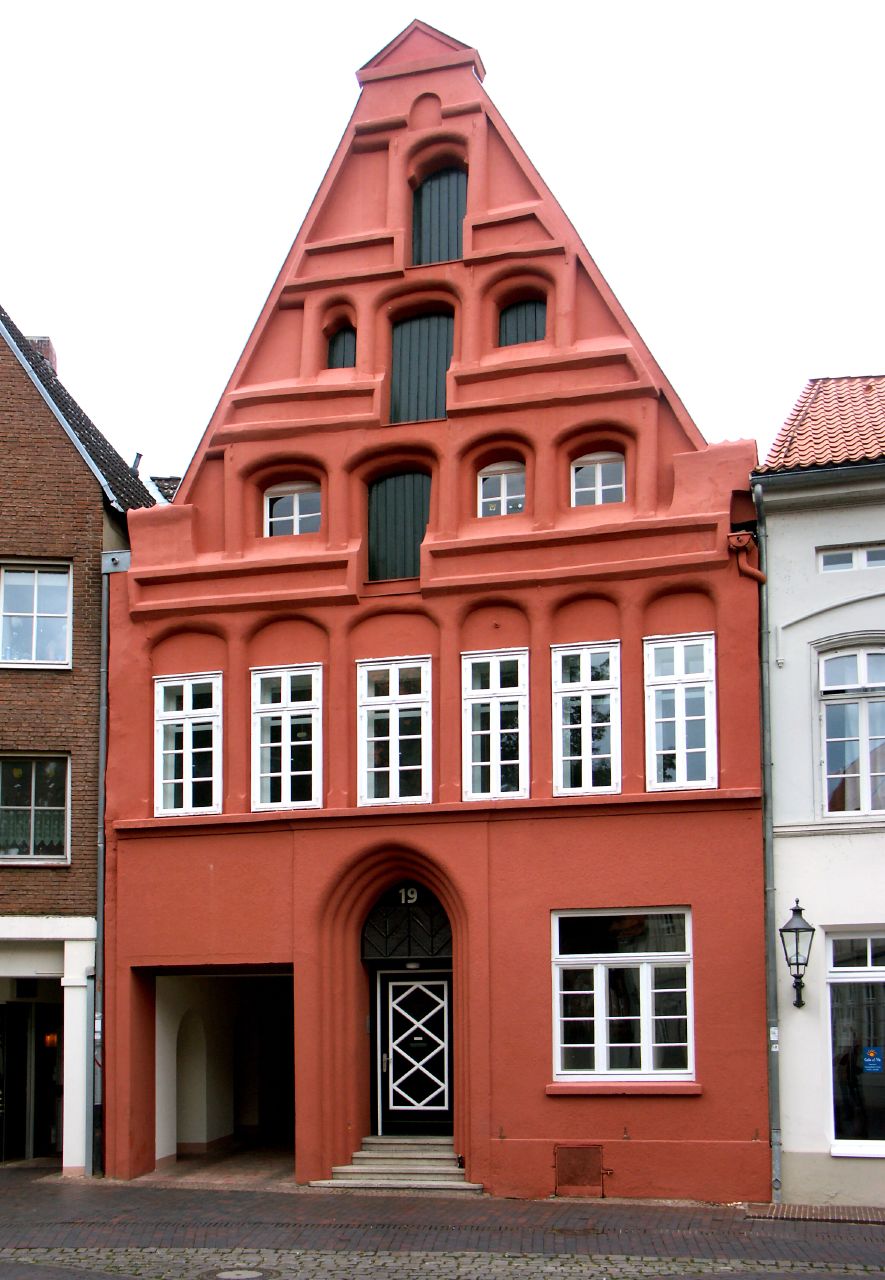#2619. Terracotta Stepped Gable Façade of a Hanseatic Merchant House
Before us stands a striking example of traditional North German/Baltic architecture - a terracotta-red stepped gable house (No. 19), representing a characteristic element of Hanseatic urban development. The façade displays the classic triangular form typical of Gothic merchant houses, with a clear horizontal articulation across five levels.
The architectural composition of the façade is built on the rhythmic alternation of rectangular windows with white frames, which create an expressive contrast with the rich terracotta color of the walls. The upper tiers of the building preserve historical elements - small windows with green shutters set in arched niches, indicating the original functional use of the upper floors as storage spaces.
Special expressiveness is added to the façade through careful elaboration of wall plasticity with characteristic horizontal divisions and niches, creating an interplay of light and shadow. The lower level of the building features an arched entrance portal with the house number and a passageway on the left side, providing access to the inner courtyard. Decorative elements are minimalist, emphasizing the practical nature of the building, originally designed for trade and storage of goods.
This specimen of northern brick Gothic has magnificently preserved its historical authenticity within the urban context, flanked by more modern buildings, making it a valuable architectural monument reflecting the rich commercial past of the region.
